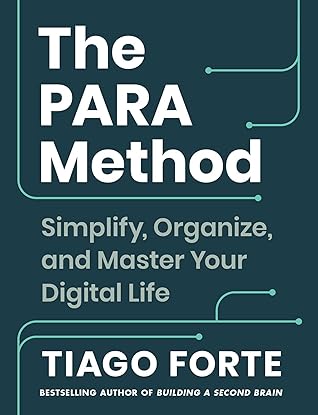More on this book
Community
Kindle Notes & Highlights
by
Tiago Forte
Read between
September 2 - September 4, 2023
Resources are quite different, since learning and exploring new things are inherently social activities. There are many situations where you might want to share your notes with someone else—to get feedback on an article you’re writing, to compare notes with a colleague on a skill you’re both learning, or to offer restaurant recommendations to a friend who is visiting a city you’ve been to before.
I recommend you think of your resource folders as “shareable by default.”
The line between areas and resources is an opportunity to be completely honest with yourself: What is inside the circle of your responsibilities, which no one else is going to take care of for you, and what is outside?
Extending PARA across Multiple Platforms
One of the key features of PARA is that it’s universal—it works across every platform where information can be stored, for any kind of information you might want to save, and is accessible on any device.
problematic because every organizational system has overhead
PARA is “platform agnostic,” meaning it is one system that can be implemented everywhere, including: Your to-do list app Your computer file system (or Documents folder) Your cloud storage drive Your digital notetaking app Other platforms where information is stored This universality allows you to “extend” the same PARA folders across every platform you use:
Technology is advancing too quickly on too many fronts for any one app to fulfill every need. Instead of fighting the tide and looking for “one app to rule them all,” use as many apps as you like, while replicating the same structure across every single one. I recommend doing so down to the exact same spelling, punctuation, and capitalization so that you can mentally transition between platforms as seamlessly as possible.
PARA perfectly mirrors the structure of your life across every platform you use. Rather than forcing your life to fit into the opinions and preferences of whatever tool you happen to be using, I advise you to do the opposite: decide how you want to order your life and work, and then ask how your tools can support that.
How to Know Where to Put a Given Item
How do I know on which platform a given item should be saved?
I use the following rules of thumb to tell me which digital storage medium is best for any given piece of information:
If it’s an appointment or meeting happening at a specific time, it goes on my calendar If it’s a task that I can complete anytime, it goes in my to-do list app If it’s text, it goes in my notetaking app (since that offers the best search function by which to find it again) If it’s content that I’ll be collaborating on with others, it goes in my cloud storage drive10 If it can’t go in any of the above locations (because it’s too large or a specialized file type, for example), then it goes in my computer’s file system (the Documents folder) Note that four of the platforms mentioned above are
...more
This highlight has been truncated due to consecutive passage length restrictions.
There is one exception to the above: if I want to save a sensitive piece of information—a tax document, credit card details, medical data, or passwords for example—I save it in an encrypted password manager app to make sure no one can access it except me.
PARA is a cross-platform system for one simple reason: your projects are cross-platform. You’ll rarely use just one app to bring a project to completion. PARA provides a way to tie together the information you’ll need to access even though it’s stored in multiple places.


